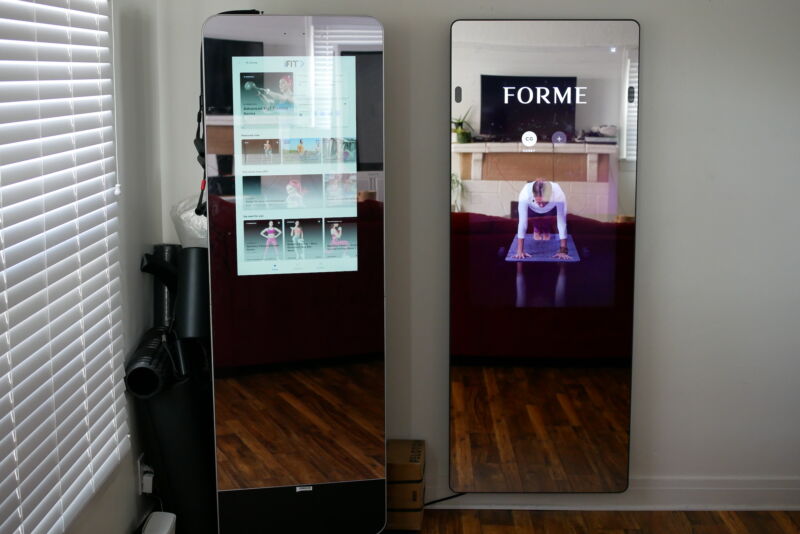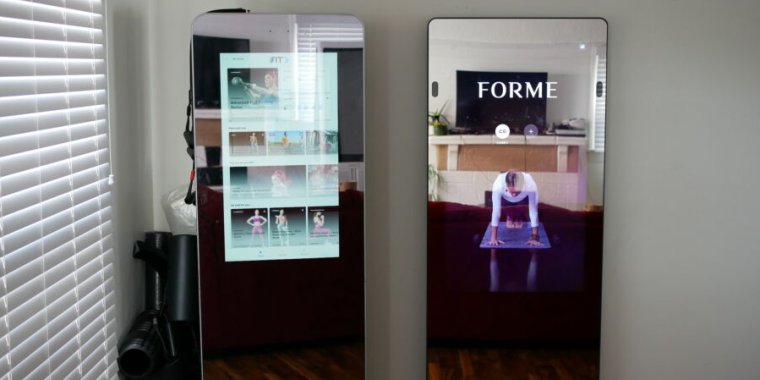
A home gym makes working out easy, which ideally leads to consistency, the key to any workout regimen. There are a few key points to setting up a home gym that appeals to you and fits your space. Mirror and screen-based fitness equipment aims to merge these solutions into one device that delivers diverse, engaging workouts.
These systems can make training much more fun and convenient while providing a solid foundation for any level of exerciser to build on with various hardware packages and progressive content. The devices can range from about $200 to $6,000 or more, and that’s without any mandatory content subscription fees.
The equipment manufacturers swear by the engagement, convenience, and consequent efficiency of such machines, and there’s a case for how this initial outlay can save you money compared to a traditional gym experience. We’ve tested a number of mirror fitness machines at a wide range of prices to see where the sweet spot lies and determine which might be worth the money for different types of people.
Best for Most People: Tempo Core
Runner-up: Peloton Guide
-
The Tempo Core is just an iPhone dock with a set of adjustable weights.
-
The Tempo Move adds a discreet piece of furniture to hold the cradle and some gear.
-
And open.
The best mirror fitness device for most people is the Tempo core, but it’s a close call. Tempo’s Core Starter Pack ($245) doesn’t use a mirror or display with sensors. Instead, it cuts the price of entry by using your iPhone camera (XR or higher) as the sensor and a TV as the main display. Place your iPhone on Tempo’s dock, set your included weights and you’re good to go.
If you don’t already have a TV to hook up to, the upgraded Tempo Studio includes a 42-inch touchscreen in a donkey-like structure with a Microsoft Azure 3D camera, speakers, and weight storage for $1,695. If you have a TV, go for the Tempo Core, as the screen is the most drastic difference.
In terms of hardware, the Core Starter Pack gives you great value for money with the weight set, as the barbell and plates can be adjusted to create eight pairs of dumbbells from 7.5 to 25 pounds each, in two and a half pound increments in between. You can also add more weights, an exercise mat, and even a barbell with plates.
Tempo offers over 1,000 classes, both pre-recorded and live, in three main categories (strength, cardio, and recovery). They are further labeled with tags such as boxing, yoga, functional movement and more. You can also search by muscle group or body area if you want to hit specific areas. There are filters to help people with previous injuries or sensitivities to certain movements, including “wrist-friendly,” “knee-friendly,” and “pregnancy exercises.” Unfortunately, there is no way to replace moves within a class, as with Tonal and Peloton.
-
The Peloton Guide
-
You can use the remote control or voice control for certain functions.
The Peloton Guide, another camera-based TV-connected strength training device, is the closest competitor to the Tempo Core. The guide has a slightly higher MSRP of $295 (currently down to $195), and that’s without weights or accessories. Since the Tempo Core is essentially just a phone dock with weights and requires an iPhone, it keeps costs down and adds value with an adjustable weight set.
Even Peloton Guide’s biggest bundle ($695 for six pairs of dumbbells, an exercise mat, water bottle, and heart rate strap, along with the Guide) is still two dumbbell pairs shy of the Tempo Core. Tempo gives beginners a big head start, saving them significant upfront costs. Features such as rep counting and automatic visual weight recognition on all workouts make the Tempo Core an attractive option for beginners and users of all experience levels.

